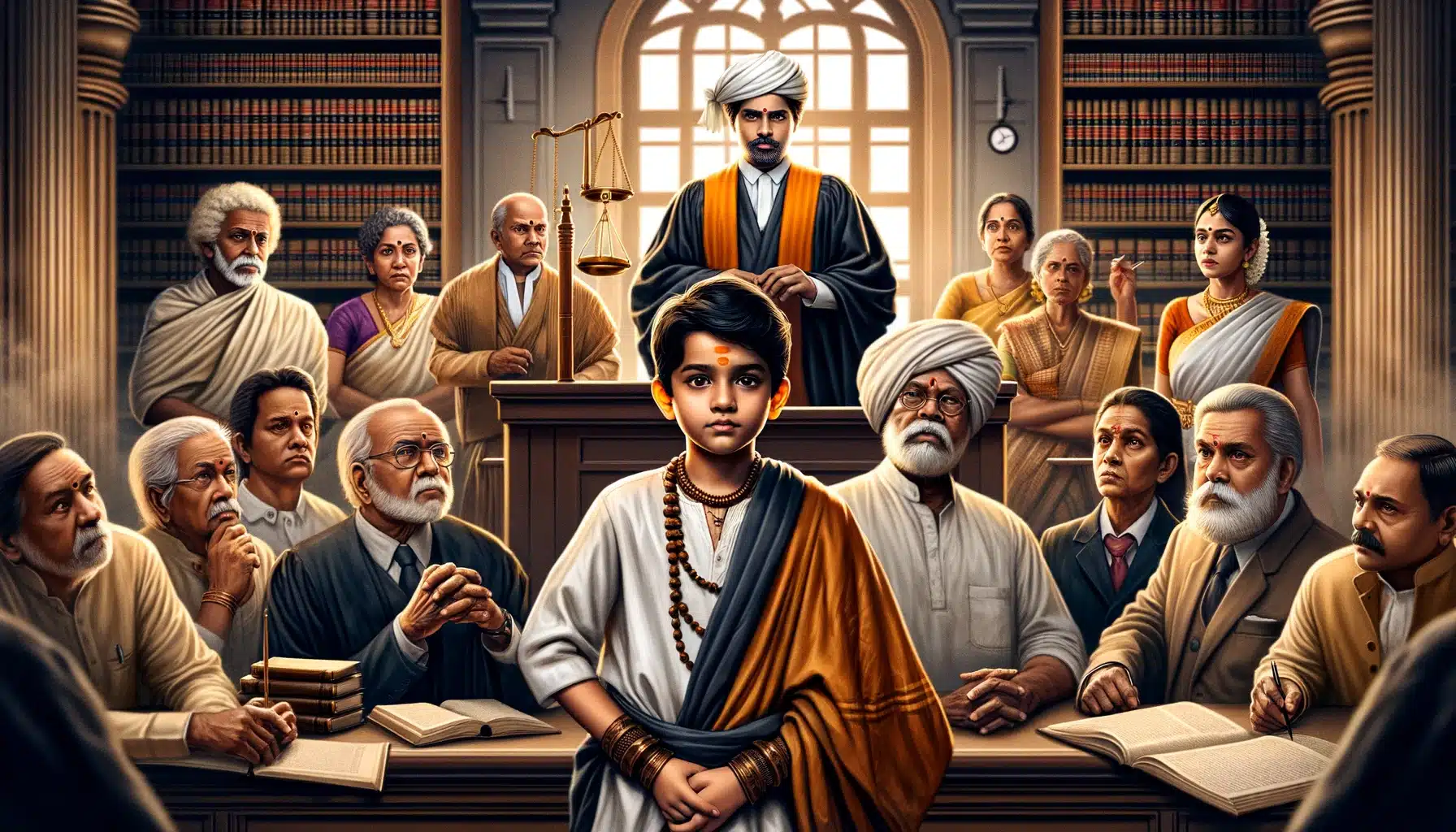Citation: AIR 1958 SC 1042 Date of Judgement: 04th September, 1958

Hallucination-resistant legal AI (context engineered)
Citation: AIR 1958 SC 1042
Date of Judgment: 04th September, 1958
Court: Supreme Court of India
Bench: T.L. Venkatarama Aiyyar (J), A.K. Sarkar (J), Pralhad Balacharya Gajendragadkar (J)
Facts
Kakumanu Ramanna, a minor of the age of about 2 1/2 years filed a suit for partition of joint family properties instituted on April 2, 1942, in the Court of the District Munsif, Ongole, by his maternal grandfather, Rangayya, as his next friend. The defendants are his family members father, mother, brothers and sister. Plaintiff contended that the sale and purchase of the joint family property were done with an objective to injure the plaintiff.
Decision of the Lower Court
Court held that findings did not furnish a cause of action for partition and dismissed the suit. An appeal was filed to the Subordinate Judge of Bapatla, who affirmed the findings of the District Munsif and dismissed the appeal.
Decision of the High Court
The second appeal was filed before the High Court of Madras, where it was held that the defendants had falsely claimed that items 2 and 11 were the separate properties of the defendants, their interest was adverse to that of the minor and that the suit for partition was clearly beneficial to him. The Court accordingly granted a preliminary decree of partition.
Appellant’s Contentions
The appeal was brought against the Judgment of the High Court under Article 136, leave was granted. The appellants advanced two contentions in support of the appeal: (1) that there was a concurrent finding by both the courts below that the suit was not instituted for the benefit of the minor, and that the High Court had no power to reverse it in the second appeal; and (2) that, in any event, as the minor plaintiff had died before the suit was heard and before the court could decide whether the institution of the suit was for his benefit, the action abated and could not be continued by his mother as his legal representative.
Decision of the Supreme Court
The Supreme Court dismissed the appeal with costs on the following grounds:
- Defendants combined action to deny plaintiffs title to item 2 and 11 and defendants claim that joint family property had debt are materials from which it could rightly be concluded that it was not to the interest of the minor to continue jointly with the defendants and that it would be beneficial to him to decree partition.
- The consent of other coparceners has no value, every coparcener has a right to become divided at his own will and option, held in the case of Girja Bai v. Sadashiv Dhundiraj[1], by the Privy Council. A division in status takes place when a coparcener expresses his intention to become separate unequivocally avid unambiguously, that the filing of a suit for partition is a clear expression of such an intention.
- The Hindu law makes no distinction between a major coparcener and a minor coparcener, so far as their rights to joint properties are concerned. A minor is, equally with a major, entitled to be suitably maintained out of the family properties, and at partition, his rights are precisely those of a major.
- The Court needs to be satisfied that the suit for partition instituted by the next friend of a minor is beneficial for the minor. The decision of a court that the action is beneficial to the minor is not to create in the minor Proprio Vigore a right which he did not possess before but to recognize the right which had accrued to him when the person acting on his behalf instituted the action.
Key legal issues discussed
1. Could the right of partition implicit in a coparcener be claimed by a minor coparcener also?
Yes
The coparceners are independent of other coparceners, is settled law. A minor is, equally with a major, entitled to be suitably maintained out of the family properties, and at partition, his rights are precisely those of a major. The Court said, “consistently with this position, it has long been settled that a suit for partition on behalf of a minor coparcener is maintainable in the same manner as one filed by an adult coparcener, with this difference that when the plaintiff is a minor the court has to be satisfied that the action has been instituted for his benefit.” It is established that a division in status takes place when there is an unambiguous declaration by a coparcener of his intention to separate and that the very institution of a suit for partition constituted the expression of such an intention.
2. Whether a suit for partition by a minor coparcener abates on his death?
No
One of the contentions raised by the appellant was that the cause of action for a suit for partition by a minor was one personal to him and that on his death before hearing, the suit must abate on the principle of the maxim, actio personalise moritur cum persona. The Court relied on the case of Rangasayi v. Nagarathnamma[2] and Mandliprasad v. Ramcharanlal[3], where it was held that. “such a suit does not abate by reason of the death of the minor before trial, and that it is open to his legal representatives to continue the suit and satisfy the court that the institution of the suit was for the benefit of the minor, in which case there would be, a division in status from the date of the plaint and the interests of the minor in the joint family properties would devolve on his heirs.” The maxim has application only when the action is one for damages for a personal wrong, and as a suit for partition is a suit for the property, the rule in question has no application to it.
3. Whether HC can interfere in findings of fact recorded by lower courts in a second appeal?
The Court observed that the finding of the Subordinate Judge was only that as the impugned sale and purchases were made before the minor plaintiff was born, no cause of action for partition could be founded by him thereon, and that, in our opinion, is a clear misdirection. The transactions in question were relied on by the minor plaintiff as showing that the defendants were acting adversely to him. The Court said in, “In holding that as the transactions in question had taken place prior to his birth the minor could not rely on them as furnishing a cause of action, the courts below had misunderstood the real point for determination, and that was a ground on which the High Court could interfere with their finding in second appeal. We accept the finding of the High Court that the suit was instituted for the benefit of the minor plaintiff.”
[1] (1916) L.R. 43 I.A. 151.
[2] (1933) I.L.R. 57 Mad. 95.
[3] I.L.R. [1947] Nag. 848.


